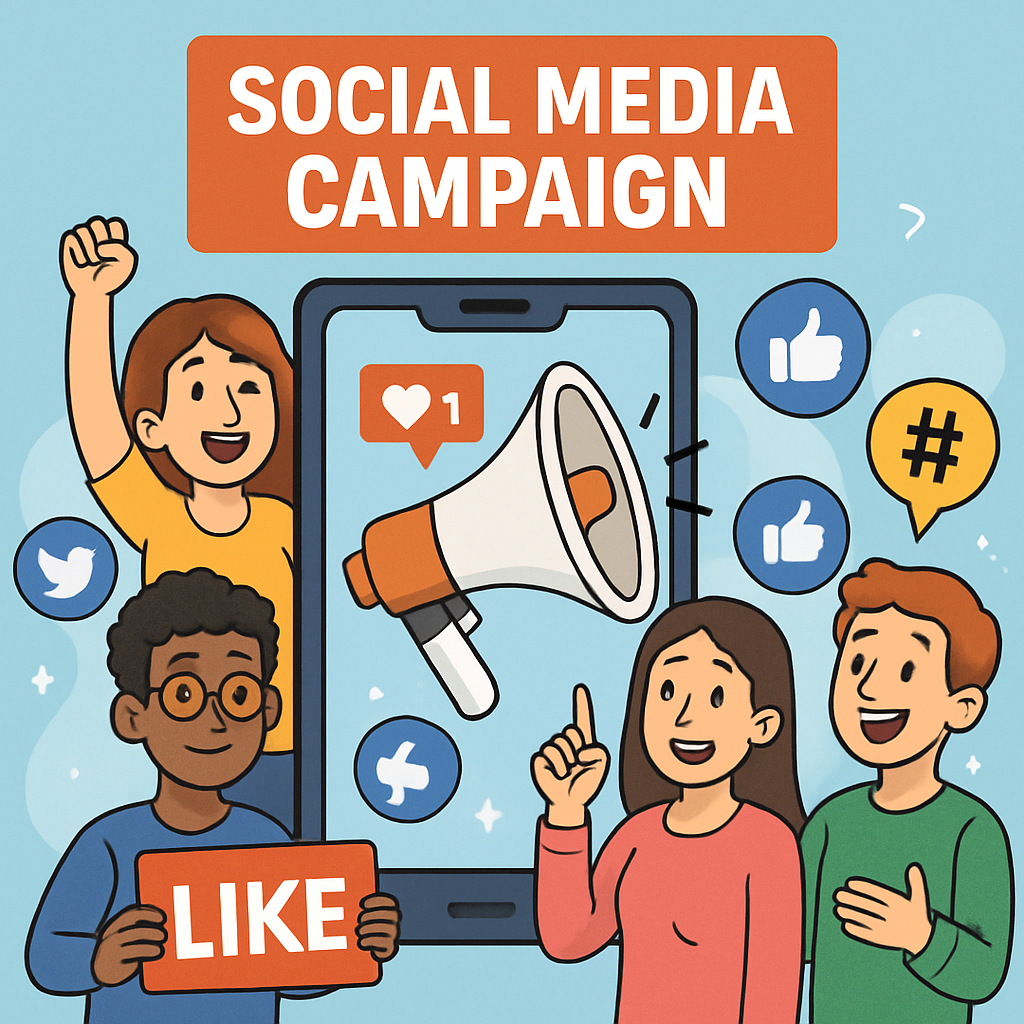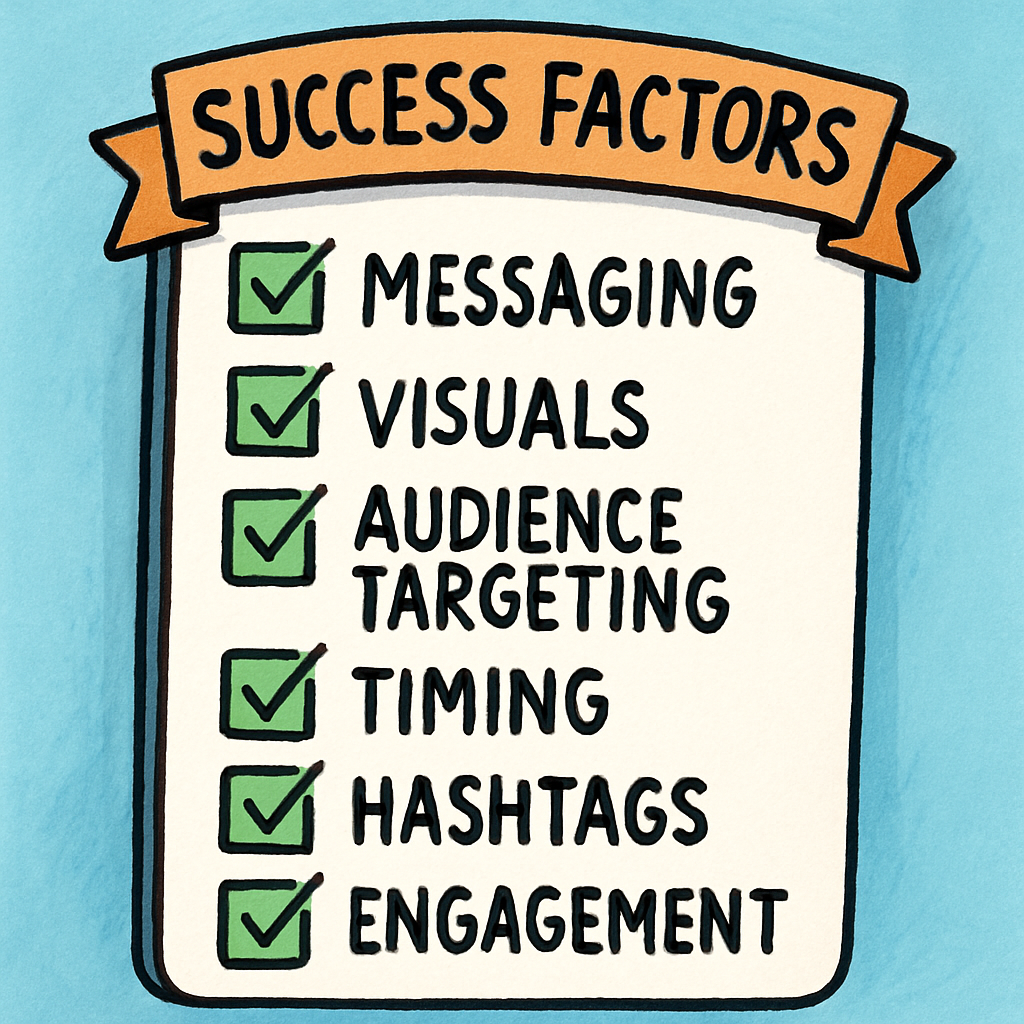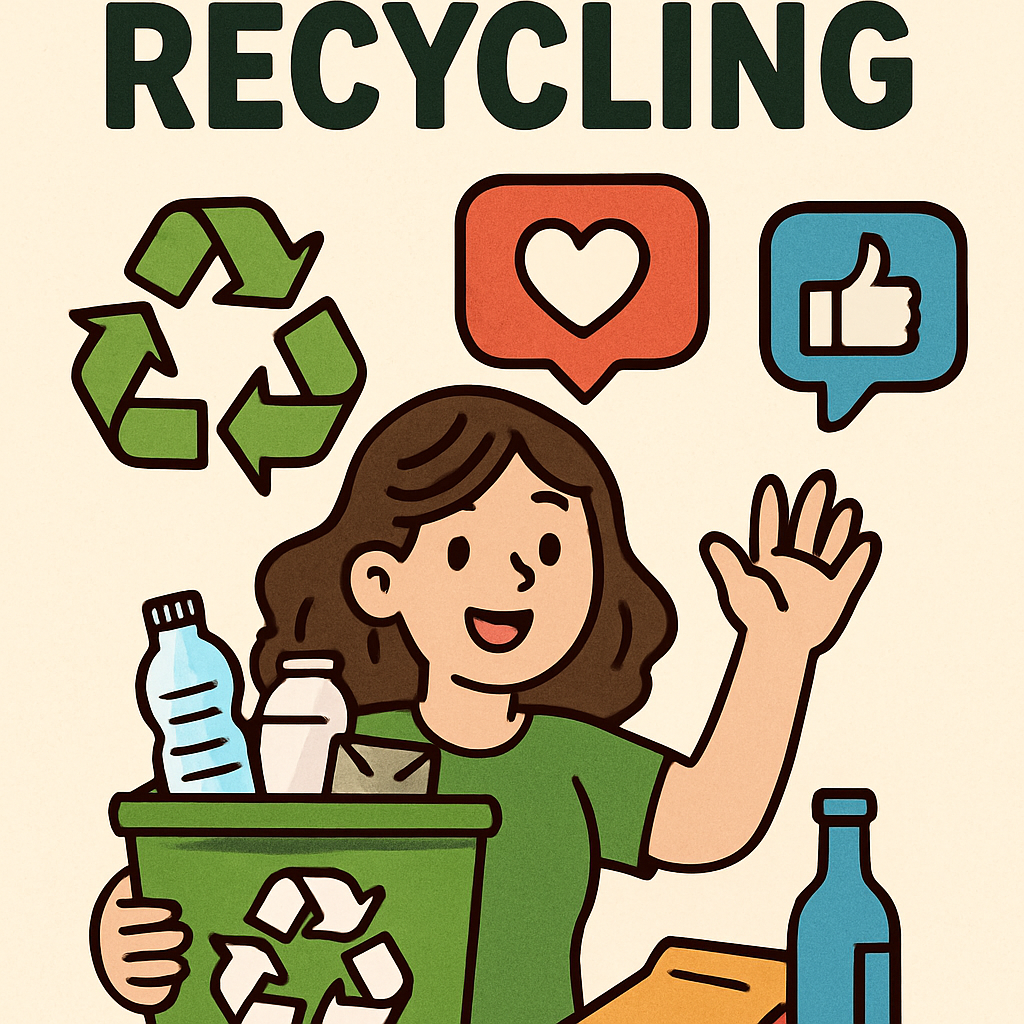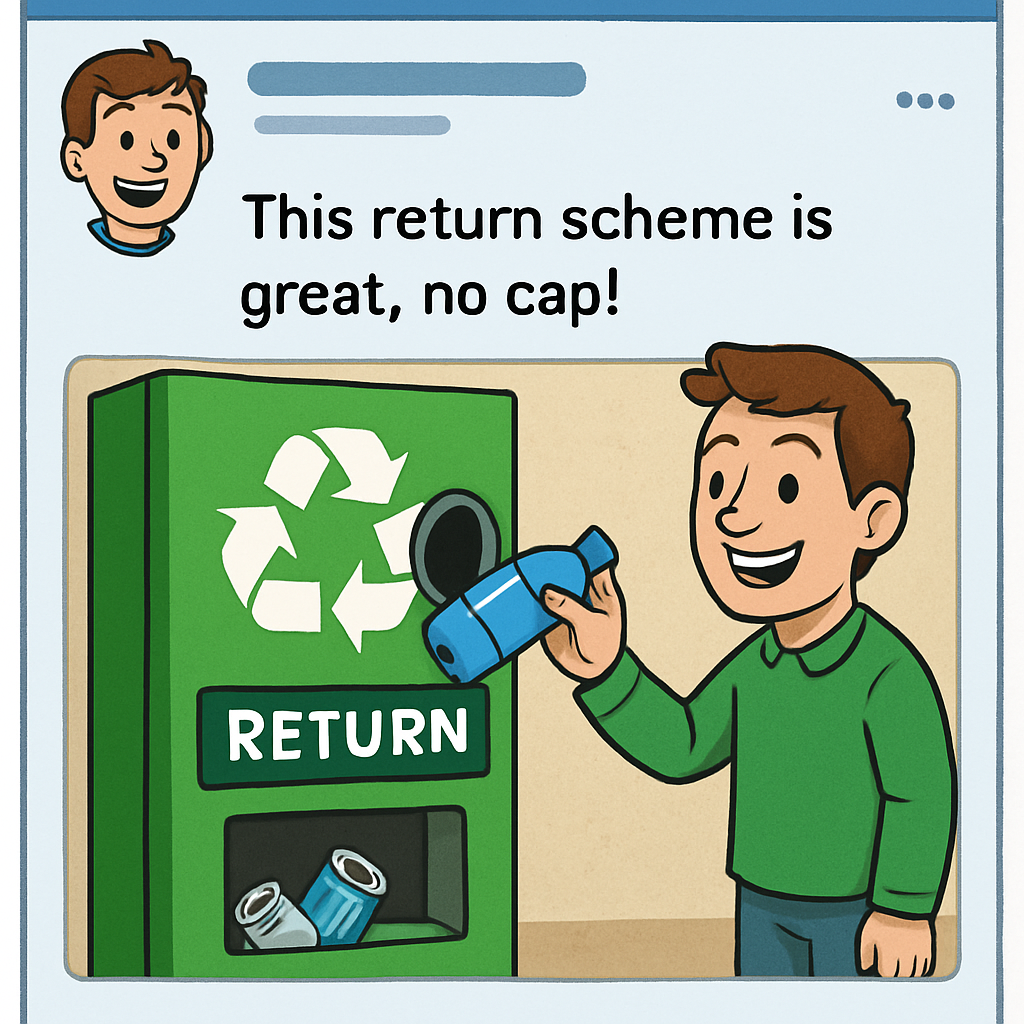 In this lesson, you will explore the application of digital media in campaigns and develop your own straightforward mock campaign. This exercise will enable you to comprehend the process of producing compelling content that can positively influence others.
In this lesson, you will explore the application of digital media in campaigns and develop your own straightforward mock campaign. This exercise will enable you to comprehend the process of producing compelling content that can positively influence others.
A social media campaign consists of a structured sequence of posts and activities on platforms such as Instagram, Twitter, or TikTok. These campaigns are designed to accomplish a particular objective, including raising awareness, promoting action, or fostering engagement. They are employed by brands, educational institutions, and organisations to establish connections with individuals, disseminate important messages, and cultivate communities.
For instance, a campaign might involve a series of coordinated posts that encourage participation in an event or highlight a social issue, utilising the wide reach of social media to amplify the message.
Social media campaigns facilitate the rapid and extensive dissemination of ideas. They can be utilised to promote events, advocate for causes such as environmental conservation, or encourage constructive online behaviours. By incorporating visuals, narratives, and interactive elements, these campaigns engage audiences effectively, rendering the messages more impactful and memorable.
In addition, campaigns often leverage user-generated content and real-time interactions to build momentum and achieve broader influence.
Upon completion of this lesson, you will be able to:
 In this step, you will examine real-world examples of social media campaigns from various sectors, including education, social good, and branding. Reflect on campaigns you may have encountered, such as #ShareAStory, which promotes reading, or environmental initiatives like #PlasticFreeJuly. These examples will help you understand how campaigns are structured and why they succeed.
In this step, you will examine real-world examples of social media campaigns from various sectors, including education, social good, and branding. Reflect on campaigns you may have encountered, such as #ShareAStory, which promotes reading, or environmental initiatives like #PlasticFreeJuly. These examples will help you understand how campaigns are structured and why they succeed.
The #HourOfCode campaign is designed to encourage students to engage with coding. It employs engaging visuals, brief videos, and interactive challenges to captivate young audiences, fostering interest in technology and programming skills. This campaign typically runs on platforms like Twitter and YouTube, reaching millions of participants globally each year.
The #Movember campaign focuses on raising awareness about men's health issues. Participants grow moustaches during November and share photographs using designated hashtags to initiate discussions. This approach leverages user-generated content on platforms such as Instagram and Facebook, building a sense of community and encouraging donations to related causes.
Nike's #JustDoIt campaign shares inspirational stories and user-generated content to motivate individuals towards personal achievements. It utilises powerful imagery and narratives on platforms like Instagram and TikTok, resonating with a wide audience by promoting perseverance and self-improvement.
 In this step, you will examine the factors that contribute to the success of social media campaigns. By understanding these key elements, you will be better equipped to design your own effective campaign. Let us explore what makes a campaign successful in a structured manner.
In this step, you will examine the factors that contribute to the success of social media campaigns. By understanding these key elements, you will be better equipped to design your own effective campaign. Let us explore what makes a campaign successful in a structured manner.
The success of a social media campaign depends on several interrelated factors. Below is a detailed breakdown of these essential components:
 Now that you have explored examples of successful social media campaigns and analysed the factors that contribute to their effectiveness, it is time to begin planning your own mock campaign. Selecting an appropriate theme is a crucial first step, as it forms the foundation of your campaign and determines its overall direction and impact. Your theme should be something that genuinely interests you, allowing you to create authentic and engaging content.
Now that you have explored examples of successful social media campaigns and analysed the factors that contribute to their effectiveness, it is time to begin planning your own mock campaign. Selecting an appropriate theme is a crucial first step, as it forms the foundation of your campaign and determines its overall direction and impact. Your theme should be something that genuinely interests you, allowing you to create authentic and engaging content.
A well-chosen theme helps ensure that your campaign resonates with your audience and achieves its intended purpose. For instance, if you select a theme related to environmental conservation, such as reducing plastic use, your campaign can inspire positive actions among your peers. Other suitable themes might include promoting a school event, encouraging kindness in online interactions, or raising awareness about healthy habits.
 Having selected your campaign theme, the next step is to brainstorm creative ideas and define clear, achievable goals. This process will help you shape the content and direction of your campaign, ensuring it is focused and effective. By generating ideas and setting goals, you will create a solid foundation for engaging your audience and measuring your campaign's impact.
Having selected your campaign theme, the next step is to brainstorm creative ideas and define clear, achievable goals. This process will help you shape the content and direction of your campaign, ensuring it is focused and effective. By generating ideas and setting goals, you will create a solid foundation for engaging your audience and measuring your campaign's impact.
Brainstorming involves generating a variety of concepts for your campaign's messages, visuals, and activities. Consider how these elements can support your theme and appeal to your audience. For instance, if your theme is environmental conservation, you might brainstorm ideas such as sharing daily recycling tips accompanied by colourful, fun images, organising a virtual challenge where participants share their eco-friendly habits, or creating infographics that highlight the benefits of reducing waste.
To brainstorm effectively:
Goals provide a clear target for your campaign and help you evaluate its success. They should be specific, measurable, and realistic. For example, instead of a vague goal like 'help the environment', aim for something concrete such as 'encourage 50 people to pledge reducing plastic use by sharing a commitment post' or 'increase awareness of positive online behaviour by achieving 100 likes and shares on educational posts'.
When defining goals, remember to make them: